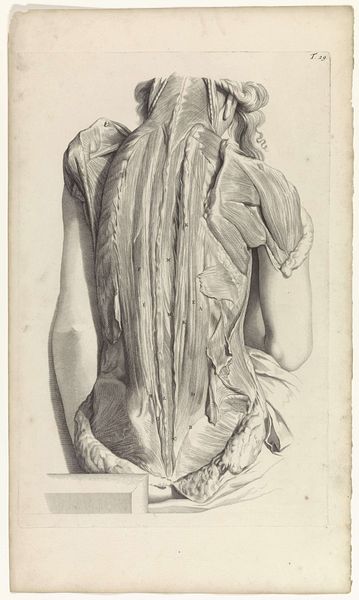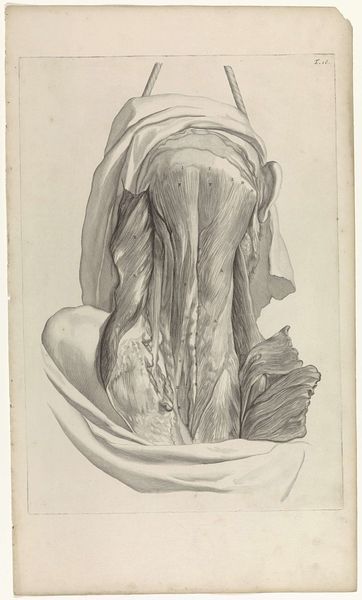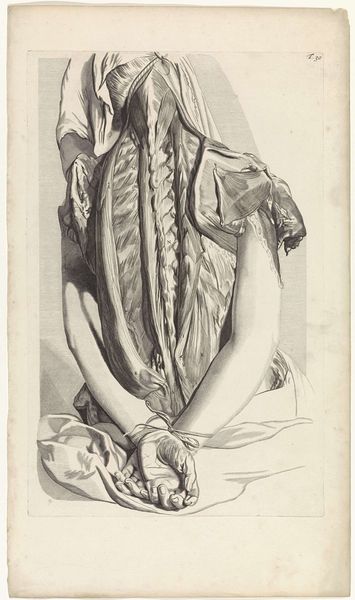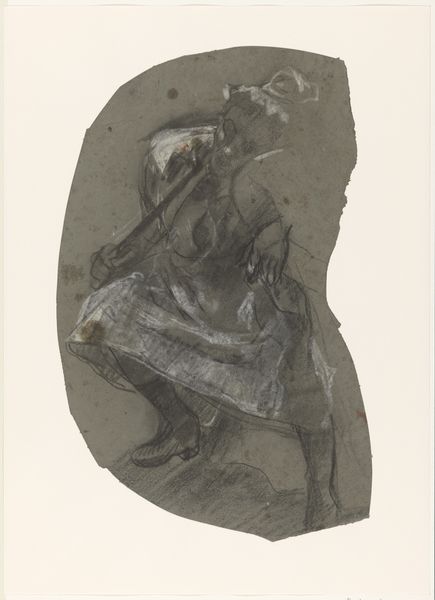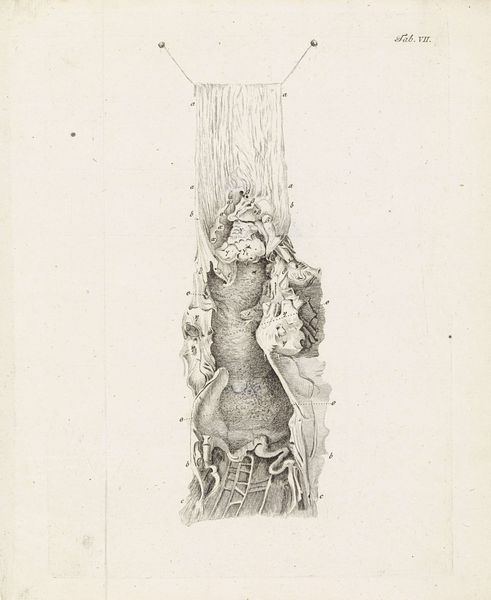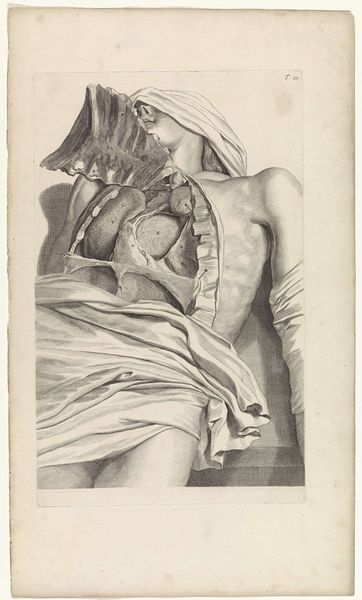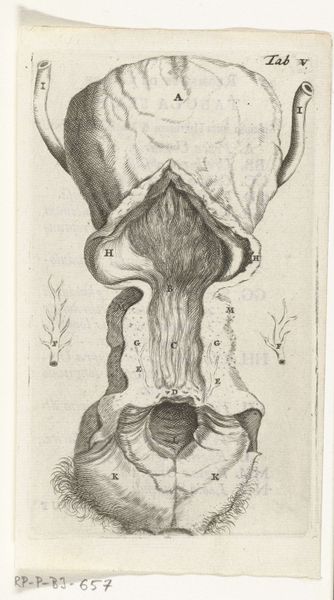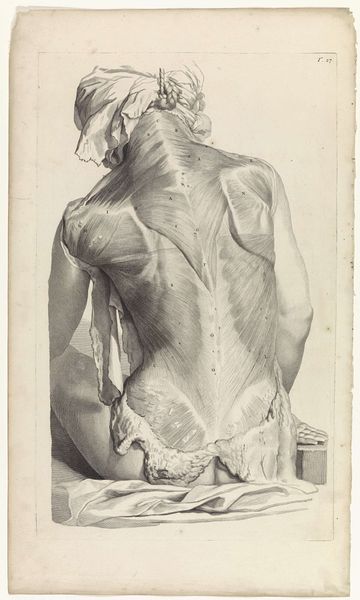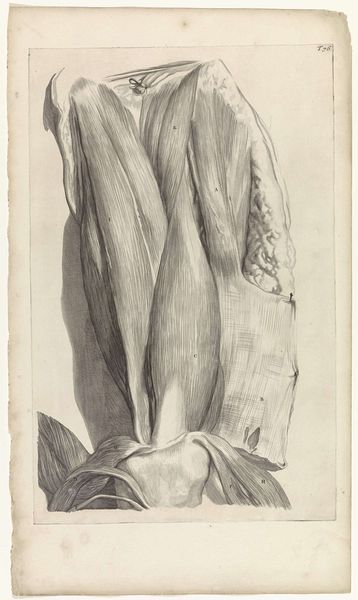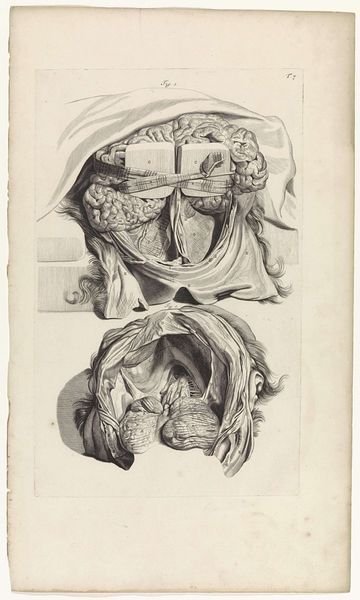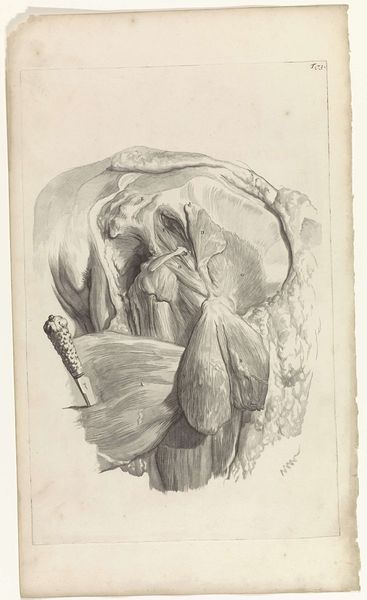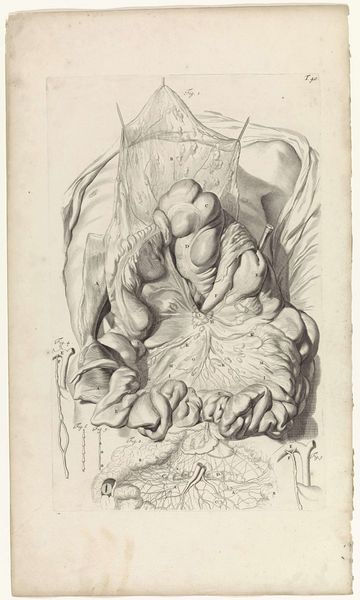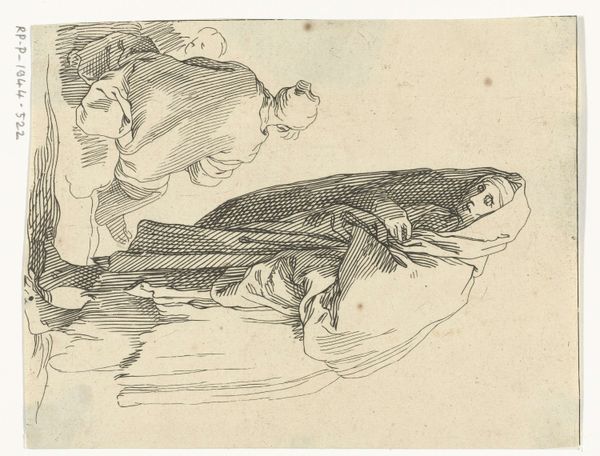
Anatomische studie van de spieren van de rug en de bovenarmen van een vrouw 1685
0:00
0:00
pietervangunst
Rijksmuseum
drawing, pencil
#
pencil drawn
#
drawing
#
baroque
#
pencil sketch
#
figuration
#
pencil drawing
#
pencil
#
pencil work
#
nude
Dimensions: width 340 mm, height 513 mm
Copyright: Rijks Museum: Open Domain
Curator: This is Pieter van Gunst’s, Anatomische studie van de spieren van de rug en de bovenarmen van een vrouw, dating to 1685. It’s currently held in the Rijksmuseum. Editor: The first thing that strikes me is the contrast of the sharp, detailed muscular rendering against the looser, almost flowing hair. It gives a sense of restrained power. Curator: Absolutely. The contrast highlights the core subject. Van Gunst masterfully utilizes pencil to convey both the intricate structure and the subtle tonal gradations, adhering to Baroque principles. Note how light plays across the exposed muscles. Editor: Indeed. It's a testament to the demanding labor that these types of anatomical drawings required. I am most impressed by the process, in terms of how the artist transferred knowledge acquired from dissecting cadavers to a two-dimensional rendering. It’s difficult to think about all of the effort. Curator: Precisely. Considering its place within anatomical study, this isn't merely representational. It serves as a diagram, where precision takes precedence over conventional beauty. The very lines become signifiers within a scientific language, mapping the human form. Editor: It's interesting that you say this, because the 'human form' being rendered here also reflects on societal ideas of the grotesque or the taboo—specifically, in showing dissected flesh to an audience unfamiliar with or unwilling to face such images. Consider where, from where, and how such anatomical knowledge could be made accessible at the time. Curator: A powerful consideration. And this accessibility can also be appreciated through van Gunst’s delicate hatching and cross-hatching, producing areas of light and shadow that lend form and depth while serving also didactic clarity. Editor: Reflecting on this piece, I am left thinking about the ethics inherent in the scientific process of such dissection as much as by Van Gunst's dedicated artistry and labor. Curator: It prompts questions regarding artistic and scientific objectives of such works in art history and, ultimately, in the perception and interpretation of anatomical knowledge.
Comments
No comments
Be the first to comment and join the conversation on the ultimate creative platform.
